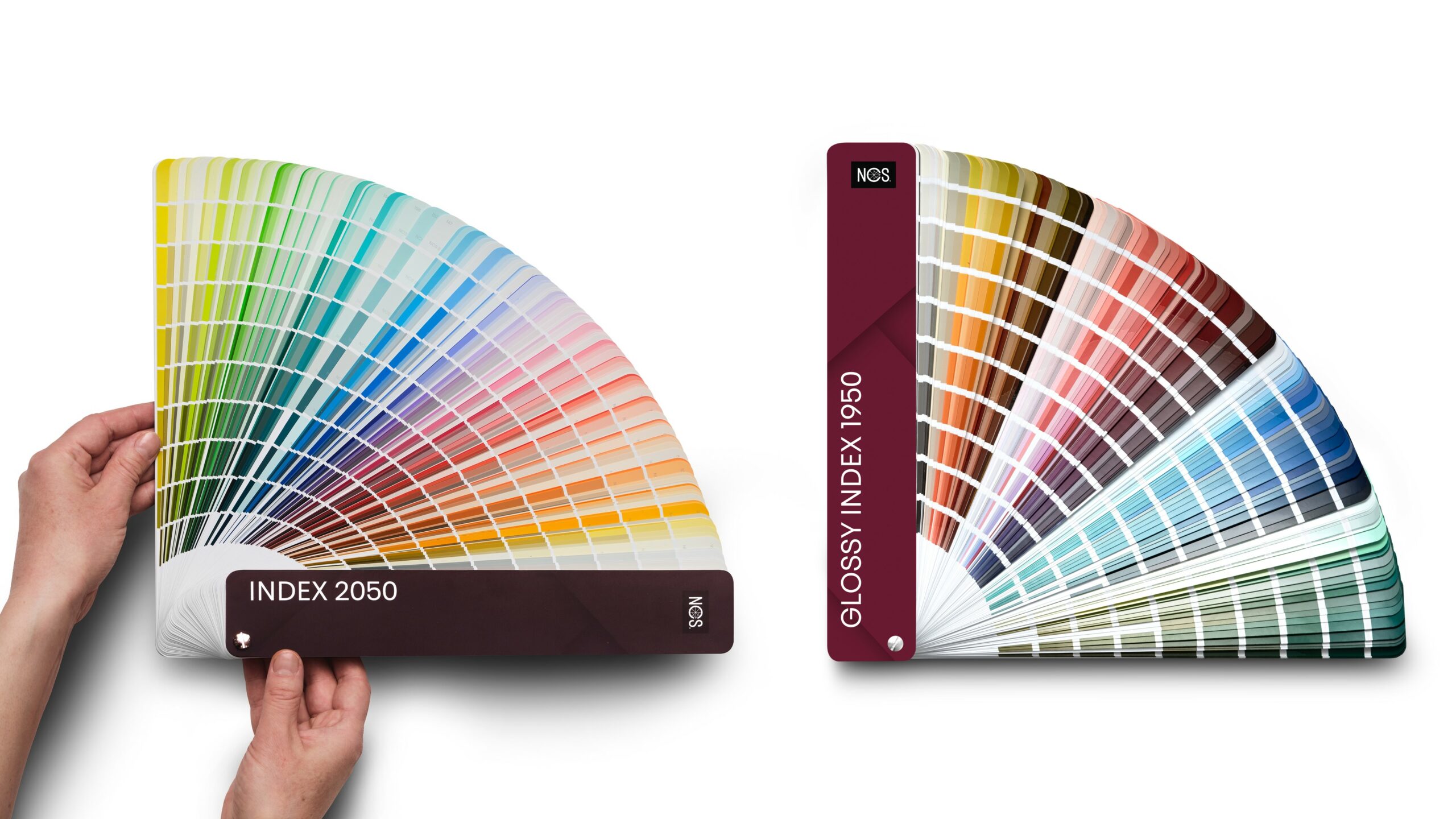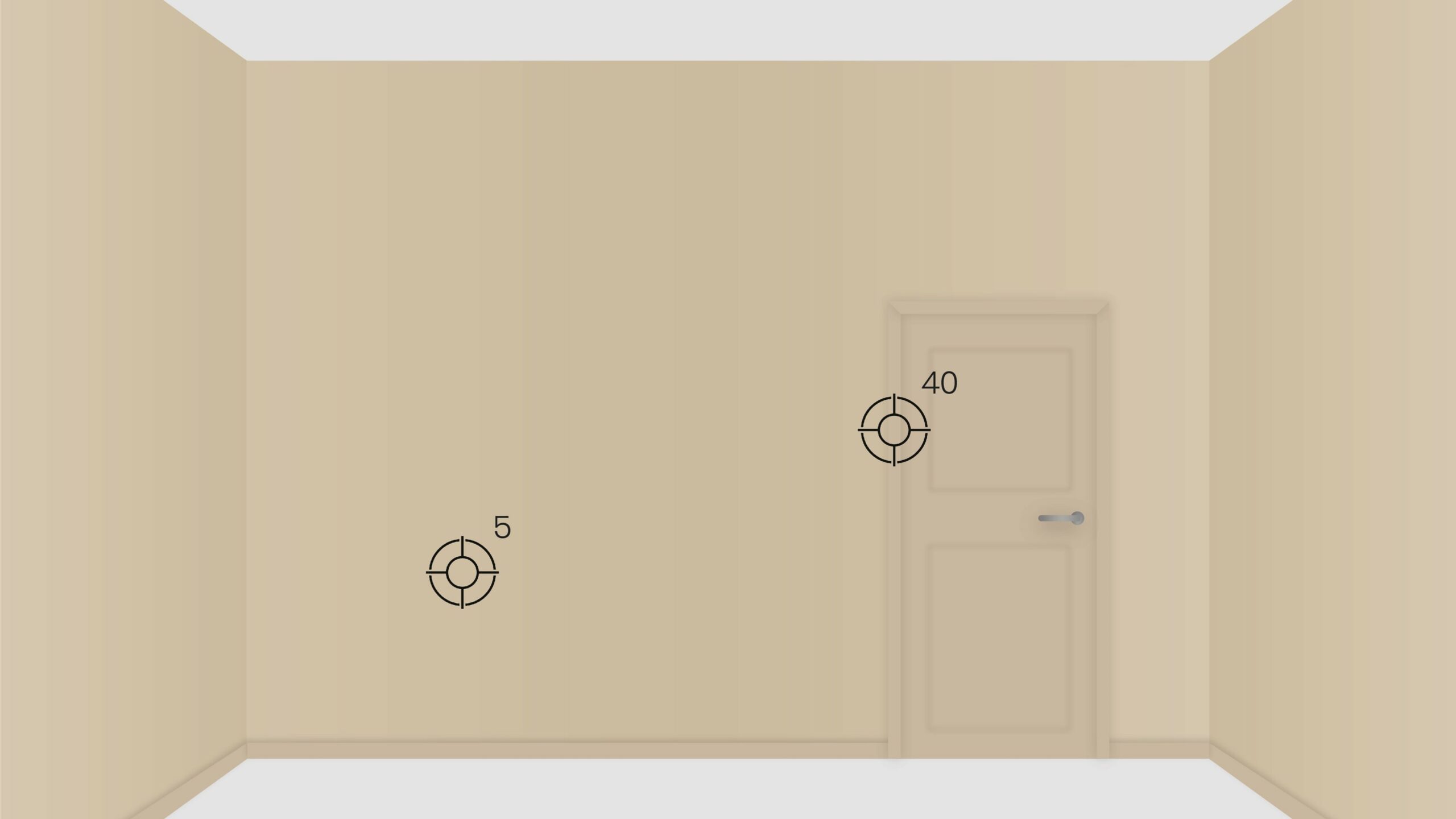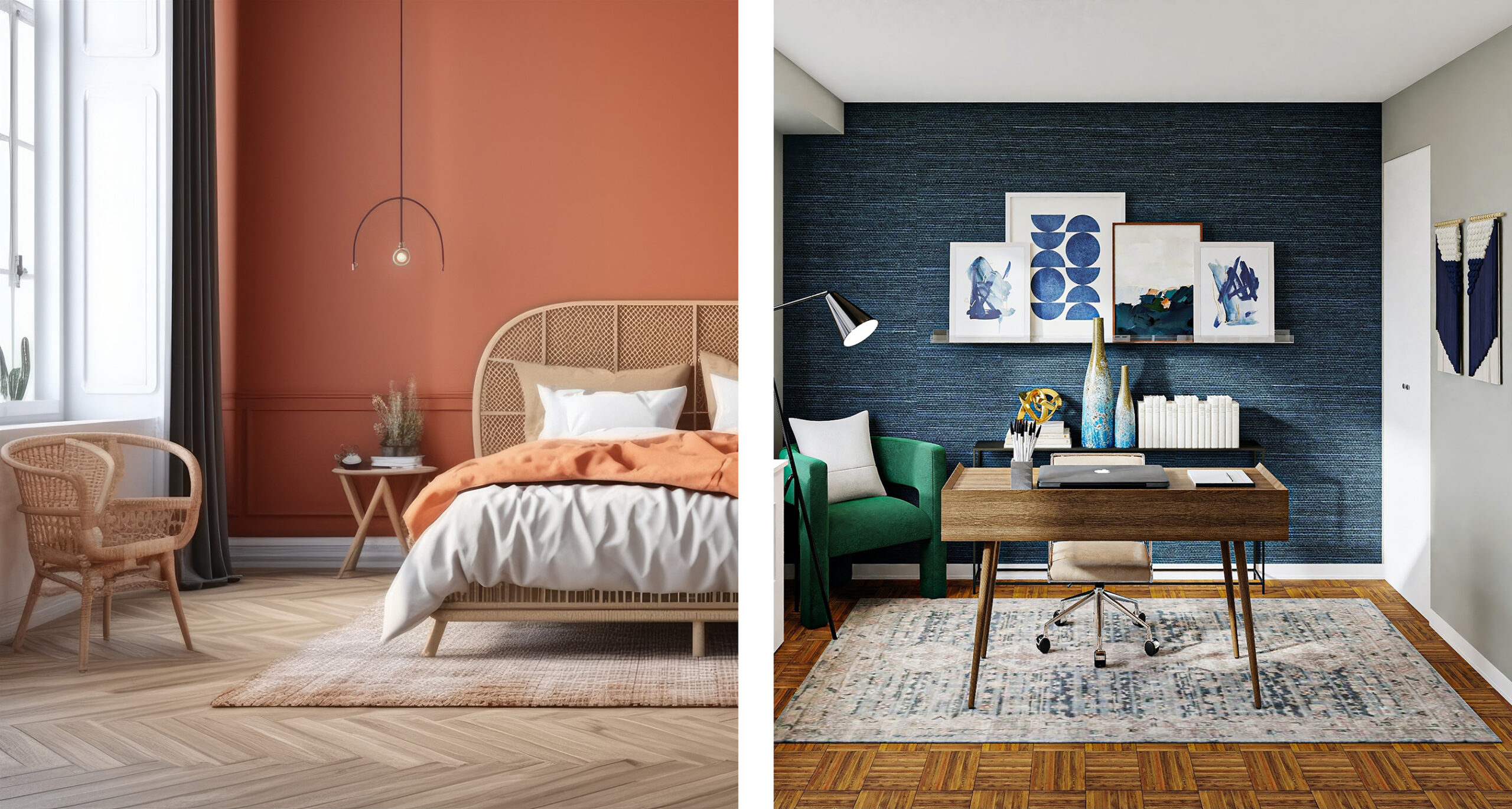Back to Course
20. NCS in kitchen studios III
0% Complete
0/0 Steps
Lesson 3 of 4
In Progress
The same color on different materials
The same color does not look the same on different materials and in different gloss levels. So let’s find a simpler way to deal with this complexity.
Gloss
Higher gloss levels make the color appear richer and therefore darker in many cases. Brighter and darker colors have a greater shift in perception between matte and glossy surfaces than lighter colors. If you want to see this perceptual shift, place color samples with matte and glossy surfaces next to each other.

To better understand this complexity, consider the case shown in the picture, where all objects are painted the same color but with different degrees of gloss. The wall is painted in gloss level 5, while the wooden door and skirting boards are painted in gloss level 40. We can see that the wood looks darker than the wall.
In this case, we do not recommend evening out this color difference, as it will change over the course of the day. Depending on the incidence of light in the room, the difference can sometimes be greater and sometimes smaller.
In this case, we do not recommend evening out this color difference, as it will change over the course of the day. Depending on the incidence of light in the room, the difference can sometimes be greater and sometimes smaller.

Texture
However, the difference in shade between a smooth and a textured surface can be greater and must be balanced out by a shade lighter in the case of the textured wall. A rough textured wall creates more shadows and is therefore perceived as darker. You need to analyze how the textured wall will change the final perception. Do you need to compensate with more or less black to make the color look the same on the different objects?
In the following illustration, we see three different structures and how they can change the perception of the inherent color. With a slightly textured wall (1.), the color appears a little darker. With an even more structured wall, the colors are perceived as even darker (2.).
In the following illustration, we see three different structures and how they can change the perception of the inherent color. With a slightly textured wall (1.), the color appears a little darker. With an even more structured wall, the colors are perceived as even darker (2.).

Dominant wall
If you have a bedroom where the light falls on one wall but not the other, so that the color looks completely different there, you need to decide which wall is the dominant wall. What do we mean by dominant wall? We mean that you choose the color of the bedroom based on the wall you want to make the highlight of the room. In a bedroom, this could be the wall behind the headboard.
The perception of colors with low chromaticity changes more depending on the incidence of light. Sometimes a green color with a low chromatic component can be perceived as grey and other times as green. Choose the color that you like best in relation to the dominant wall.
The perception of colors with low chromaticity changes more depending on the incidence of light. Sometimes a green color with a low chromatic component can be perceived as grey and other times as green. Choose the color that you like best in relation to the dominant wall.

